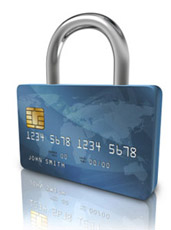Secured Loans Types and Benefits
A secured loan can take different forms – mortgage, non-recourse loan, title and secured car loans, and pawnbroker loans. The main difference between unsecured and secured debt is that the latter is backed by some valuable asset, known as collateral. There are different types of collateral depending on the credit, i.e. whether it is personal, business or mortgage. Financial institutions which provide mortgages require that borrowers offer their house as collateral. Given that a home is a big purchase, these loans come with long terms, lasting between 15 and 35 years. Other types of collateral include commodities and metals, corporate bonds, and government securities. In addition, applicants can offer covered bonds, letters of credit, and cash.
What You Need To Know
Borrowers who apply for a secured loan should meet the bank’s income and credit requirements. Financial institutions assess the applicant’s ability to make payments. They use different rations for this purpose, including the total expense and housing expense ratios. Maximum ratios vary depending on the financial institution. Borrowers who are slightly over the limit often use the services of a mortgage broker who has access to a wide variety of loans.

Financial institutions offer better terms to applicants who make a substantial down payment, work full-time, and have a stable (high) income and an impeccable credit history. On the other hand, there are ways to reduce the expense ratio. One is to ask an employer, friend, or family member to contribute. Another way to do this is to prove that you have additional sources of income that are expected to continue in the future. These include bonuses, overtime, and others.
Non-recourse Loans
A non-recourse loan is another type of secured debt, which is secured by some real estate property. Businesses often resort to this type of financing for projects requiring substantial investment. The loan-to-value ratio is between 50 and 60 percent, meaning that the loan is overcollateralized. There is a difference between recourse and non-recourse loans. The first type gives more power to financial institutions. They will require repayment even after they seize the collateral. This is in case it doesn’t cover the full amount. Thus, the lender has the right to levy your bank account, garnish your wages, and file a lawsuit against you. The case is different with non-recourse loans. The financial institution will seize the collateral but cannot demand other forms of compensation. For instance, if you default on a non-recourse car loan, your financial institution can repossess the vehicle but cannot file a lawsuit. Such loans are risky for financial establishments and for this reason, they require a low loan-to-value ratio. Financing also comes at a higher rate of interest.
Benefits
Borrowers who opt for a secured financing enjoy a lower rate of interest, and interest may be tax deductible. This is the case when real estate is used to secure the loan. Some people also opt for a home equity line of credit or home equity loan. It is best to ask whether tax deductions apply and if they are applicable above the standard deduction.
Secured car loans are also a form of financing offered to borrowers who intend to purchase a vehicle. The car itself serves as collateral to secure it. The average repayment term is between 72 and 84 months, and the monthly payment is smaller than on an unsecured credit. This type of financing offers some advantages, one being that it comes with a lower interest rate and income requirements. Because the loan is backed by an asset, borrowers with different income levels can apply. Likely candidates are persons with a stable income, as well as those with an investment and freelance income. When it comes to title loans, financial institutions often require that borrowers have full-coverage insurance. Another requirement is that the vehicle is in good condition.
Finally, some people resort to pawnbrokers whereby some valuable item is pledged to secure the loan. The loan is usually short-term. Borrowers can use different types of collateral, including musical instruments, jewelry, tools, pieces of furniture, electronics, and others. In some cases (depending on the state), borrowers may also pledge firearms. The loan amount is determined by the current market value of the item.
Related Articles
A Secured Credit Card for People with Money Problems
A secured card is a borrowing instrument that requires a deposit and is a good option for people who need to build or rebuild their credit history. The limit is usually lower than or equal to the deposit made. Some financial institutions keep the funds in an interest-bearing account until the...
Secured Debt for Home Purchases and Unforeseen Expenses
Secured debt is offered in the form of mortgages and other loans that require collateral. Financial institutions extend financing to individual borrowers and businesses and feature lower interest rates. Banks face lower risk when collateral is offered and can recover it in case of default. Types of...
Consumer Debt - Secured and Unsecured Types
Consumer debt is money owed as a result of buying services and goods. These items don’t bring profit and are consumed. Unlike mortgages, the interest payments on consumer debt are not tax-deductible. Consumer debt allows borrowers to pay their ongoing expenses (rent, phone and electricity bills),...
